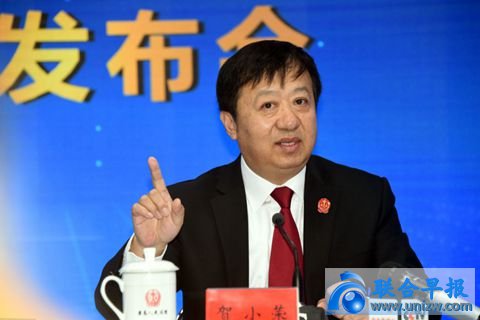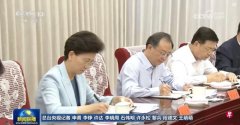
He Xiaorong, chief judge of the Second Civil Division of the Supreme Court, joined the leadership of the court and was promoted to a second-ranking judge.The leader column of the official website of the Supreme Court shows that He Xiaorong has been promoted from a member of the Judicial Committee to a full-time member at the deputy ministerial level, and concurrently serves as the president of the Second Civil Division.
According to the People’s Court News, on the afternoon of July 19, the Supreme Court held a meeting of the leading group for judicial reform. He Xiaorong attended as a full-time member of the Judicial Committee at the deputy ministerial level. This was his first public report in his new position.The full-time committee members at the deputy ministerial level are not members of the party leadership of the Supreme Court, but they belong to the leadership of the court and assist in the management of part of the trial work.
According to public information, He Xiaorong is 54 years old (born in November 1963), from Zizhou, Shaanxi, with a doctorate in jurisprudence. He has switched between various legal professions such as scholars, lawyers, and judges.In September 1980, he was admitted to Northwest University of Political Science and Law (later renamed Northwest University of Political Science and Law). After graduating from his undergraduate degree, he continued to study for a master's degree in comparative law., worked as a part-time lawyer and director of a law firm. In 2000, he received a doctorate degree in jurisprudence from Renmin University of China in the direction of contemporary Western law. He later taught at the School of Humanities, Beijing University of Chemical Technology. In the same year, he took part in the Supreme Court's public entrance examination for senior judges and was admitted., was appointed as a judge of the Supreme Court by the Standing Committee of the National People's Congress the following year.
During his tenure in the Supreme Court, He Xiaorong served as a judge and presiding judge of the first civil court.In 2003, He Xiaorong entered the post-doctoral mobile station of the Institute of Law of the Chinese Academy of Social Sciences to engage in research on civil and commercial law. After leaving the station in 2005, he was named an associate researcher of the Institute of Law of the Chinese Academy of Social Sciences.Since 2006, He Xiaorong has successively served as the director of the office of the president of the Supreme Court, the deputy director of the office, and the deputy chief judge of the First Civil Court.
Since the 18th National Congress of the Communist Party of China, Chinese courts have launched a new round of judicial reform, and also promoted the reform and innovation of administrative trials, financial trials, and bankruptcy trials in order to serve the needs of national economic and social development.During this process, He Xiaorong repeatedly took key positions. He successively served as the director of the Office of the Leading Group for Judicial Reform of the Supreme Court (hereinafter referred to as the Judicial Reform Office), the chief judge of the Administrative Tribunal, and the chief judge of the Second Civil Tribunal. He was a participant and witness of a series of macro reforms.
For example, during his tenure as the director of the Judicial Reform Office of the Supreme Court, He Xiaorong took the lead in drafting the Fourth Five-Year Reform Outline of the People's Court (2014-2018), several opinions on improving the judicial accountability system of the People's Courts, and other judicial reform documents, and also distributed them to the society in various ways.Interpretation; in November 2015, after serving as the chief judge of the Administrative Tribunal, he organized the drafting of judicial interpretations of the Administrative Litigation Law and other documents;Formulate normative documents on preventing financial risks and improving the business environment.At the beginning of 2018, he accepted an exclusive interview with Caixin on how to improve the bankruptcy administrator system, the bankruptcy of affiliated companies and other issues that the industry is looking forward to solving.
Since June 2018, the leadership of the Supreme Court has undergone frequent adjustments: at the end of June, Shen Deyong stepped down as executive vice-president at the ministerial level, and Yang Wanming returned from the head of the Beijing High Court to serve as the vice-president of the Supreme Court;Xu Jiaxin, who was two and a half years old, was parachuted into the position of secretary of the party group of the Jilin Provincial High Court;
After this adjustment, the leadership of the Supreme Court now has 13 members, which is two fewer than the same period last year.The 13 people are: Dean Zhou Qiang, vice presidents Jiang Bixin, Li Shaoping, Jiang Wei, Zhang Shuyuan, Tao Kaiyuan, Yang Wanming, party group member Sun Huapu, Central Commission for Discipline Inspection Liu Haiquan, head of the discipline inspection team at the academy, deputy ministerial-level special committee member of the review committeeHu Yunteng, Liu Guixiang, Pei Xianding, He Xiaorong.The position of executive vice president of the Supreme Court is temporarily vacant.■



